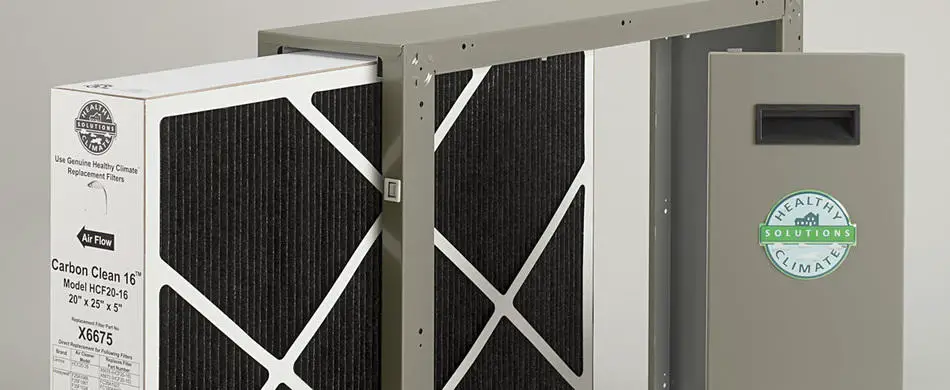
There is no question that fresh air in your home can improve your quality of life. To get fresh air in your home, the EPA states that in addition to ventilating your home with clean outdoor air and reducing the sources of pollutants air purifiers can really help in improving your air quality. However, the number of air purifier options you have out there is dizzying. If you are struggling to make up your mind about whole house air purifiers, I have written this post just for you. I think a good place to start in guiding you is defining exactly what whole house air purifiers are.
What are whole house air purifiers? A whole house air purifier is an air purifier that cleans and ensures fresh air in all rooms of a house at the same time. It’s unlike a portable air purifier which can only purify air effectively in one room at a time. To purify an entire home’s air, whole house purifiers normally use an existing air duct system.
Unless you live in a small 1 to 2 bedroom apartment where you can easily run air pipes to every room, don’t waste your time with whole house air purifiers if you do not have an HVAC, air duct or central air system of some sort running through your home. You can install an HVAC system if you don’t have one but your money will be better spent just getting portable air purifiers for each room if you don’t currently have an HVAC already.
On the other hand, if you have a central air system or HVAC then a whole house air purifier is worth considering but before rushing out to get one there are several things you should know. In this post, I cover all the important questions and factors for you to consider before getting a whole house air purifier.
I cover everything from how whole house air purifiers work to what are the best brands and finally I conclude with my thoughts on the circumstances that warrant you getting a whole house air purifier. Let’s get started with how they work.
How Do Whole House Air Purifiers Work?
Normally whole house air purifiers work by being attached somewhere after or before your HVAC handler to clean the air your HVAC is pumping before it is released out of your duct into your home. However, you can also get a stand-alone whole house air purifier that sucks and cleans your indoor air and outdoor air and pumps this clean air back into your entire home through your duct work.
In most situations, people normally install a whole house air purifier if they have a working HVAC system. Accordingly, let’s focus on the different ways whole house air purifiers can work when being installed on an existing HVAC system. If you understand how they work with an HVAC system then all the other situations are easy to understand as you just exclude the air handler section of the HVAC in your installation.
If your home has a duct system but no HVAC you can get a standalone air purifier which attaches to the inlet of your duct system and it sucks air in and out of your home through its air cleaning unit. As for HVAC’s you usually add on a box or cylindrical looking device with its own fans so as to not restrict the HVAC’s air flow. Your air cleaner can also be as simple as an advanced flat air filter that you latch on directly on your air handler.
Your HVAC system continues to do the air sucking and pumping part while the air purifier just cleans the air. The most common places where your whole house air purifier can be placed on your HVAC system is in your attic, basement, utility room, ceiling or even on your roof depending on your homes set up.
In the worst case, I have even seen some purifiers being installed inside walls and crawl spaces and this really depends on how your HVAC system is set up and some homes are just unique. If your air purifier is being installed anywhere else but in the places I have mentioned then you can start questioning whoever is doing the installation and perhaps get a second opinion before they do.
Now as for the setup, there are three main approaches namely, bypass, non-bypass connected and non-by-bypass unconnected.
The Bypass Approach
In the bypass set up your air purifier is connected to your HVAC system in such a way as to completely not obstruct the air flow of your air handler. So you have a pipe running into the side of your return duct that is connected to your air purifier and the main return duct.
The idea with the bypass approach is that if your air purifier gives out, then your HVAC system does not stop working and it also has an alternative air return duct route. Also sometimes the way your home is structured may not easily allow for a non-bypass approach and the easiest solution is to do a bypass.
The problem with this approach is that your air does not get completely cleansed as not all of it passes through your air purifier and actually just flows directly to your air handler through the main return duct. So if you use the bypass approach your indoor air quality may only improve slightly and not to a level you require.
The Non-Bypass Connected Approach
In this approach, your air purifier is attached right on your air handler. It can be placed between you supply duct and air handler or return duct and handler. This approach ensures all air going back into your home goes through your air purifier first and so if you have a really good air purifier attached to your air handler you should see a considerable improvement in your home’s air quality. Check out the video below to better visualize this set up.
Now an alternative to connecting an air purifier directly to your HVAC’s air handler is to just replace your current air handler filter with an advanced flat air filter that can get rid of more air pollutants than the usual filter but there are limitations to this approach and that I mention these in the next section. You will get far better performance and air quality with just an actual stand alone room air purifier or connected air purifier.
The trouble with the connected approach though is that if your purifier is not snug fit and connected properly you can get air leaks. Once you have air leaks in your HVAC system, not only will your HVAC not pump air through your home properly but poor air will sip through the cracks and gaps between your air purifier and your HVAC system resulting in poor air quality anyway. Any air leak as a result of poor installation will defeat the purpose of your air purifier no matter how it is installed in your HVAC system.
The Non-Bypass Unconnected Approach
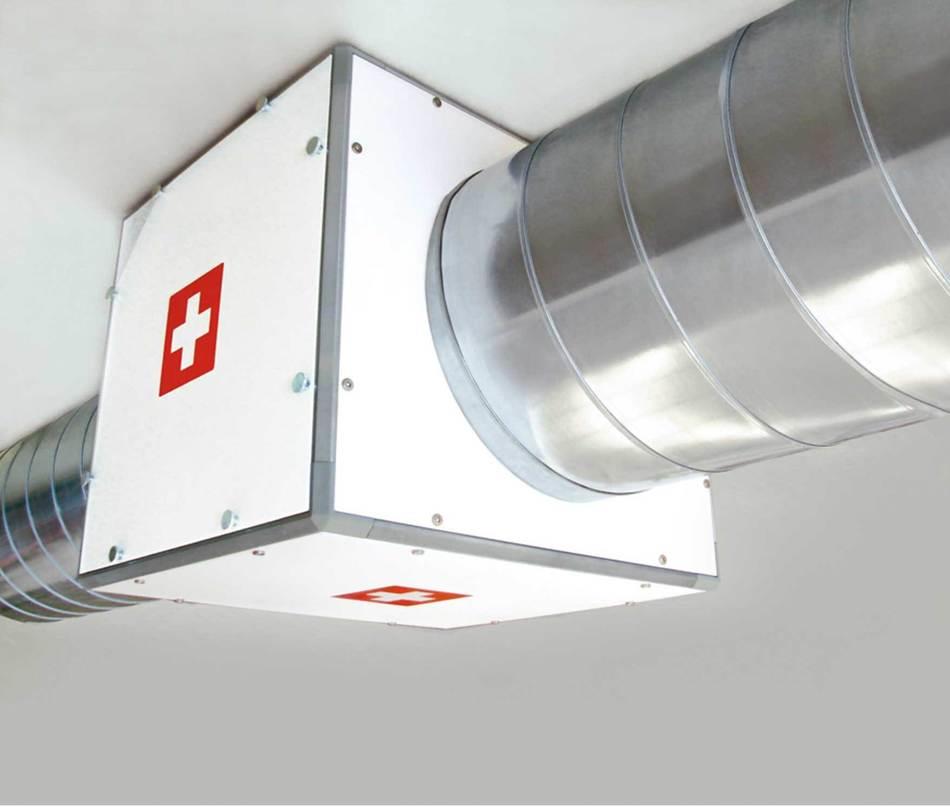
The final way a whole house air purifier works in the context of an HVAC system is by installing it away from your air handler but somewhere along your main supply or return duct in such a way that air going into your home passes through your air purifier first before it reaches any room. The approach is less risky for your HVAC air handler as you do not tamper with the handler in any way.
Regardless if your air purifier fails then you obstruct the airflow for your whole HVAC system. Your advantages and disadvantages here are all the same as the connected approach but with a bit less risk as you don’t mess with the air handler. Again your limitations will largely come stem from how your HVAC system is structured and whether you have enough space along you supply duct or return duct to place an additional device before the ducts branch out to other rooms.
What Are The Different Types Of Whole House Air Purifiers?
The re are 10 main types of whole house air purifiers and they include,
- Flat Filters
- Extended Media Filters
- Electrostatic Precipitators
- Charged Media Whole House Air Purifiers
- UVGI Whole House Air Purifiers
- APCO Whole House Air Purifiers
- HEPA Whole House Air Purifiers
- Combo Whole House Air Purifiers
- Stand Alone Whole House Air Purifiers
- Duct Based Whole House Air Purifiers
1. Flat Filters
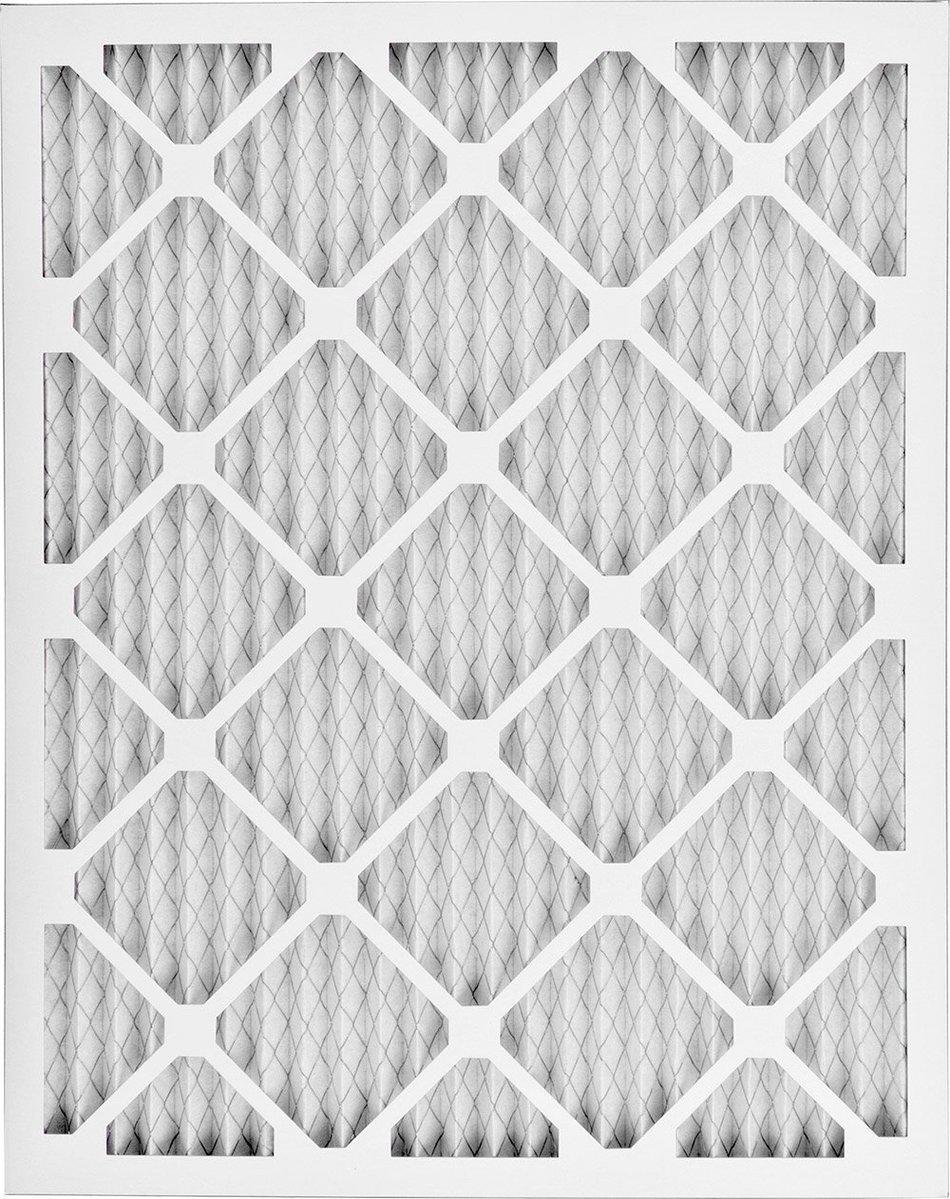
Flat filters are literally just the filter that goes onto your HVAC handler. You fit them on to your HVAC in the same way but they are better designed than standard HVAC filters and are able to filter out more pollutants. Flat filters are good at keeping out dust, and larger particulate pollutants but they don’t work for finer air pollutants, volatile organic compounds (VOCs), smells, allergens and gases.
More than anything, flat filters protect your HVAC system and extend its life. You, however, need to replace your filter about every 3 months or else your filter gets clogged up and your HVAC fan has to work harder to suck in air. Also, make sure your HVAC is able to handle filters with a MERV rating of over 10 otherwise your filter could put some serious strain on your HVAC and potentially damage it. If you want to go the flat air filter route with your HVAC check out my post on which HVAC and Furnace filter to go for here.
2. Extended Media Filters
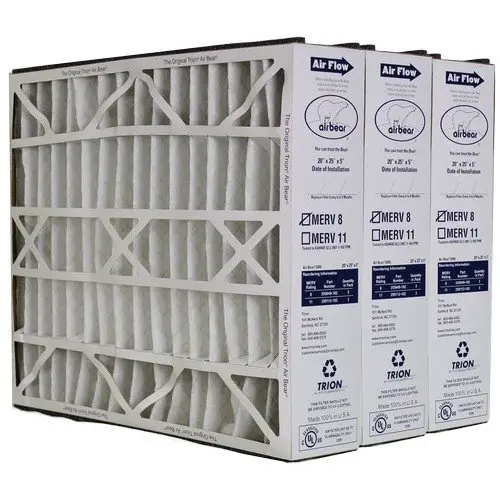
Extended media air filters are a thicker version of flat air filters. They are thicker because they have several layers of filters stacked up next to each other. In this way, if a pollutant passes through the first layer of filters it is slowed down increasing the chances of it getting trapped by subsequent filters and taken out of the air.
Extended media air filters don’t simply fit onto your furnace or HVAC like flat air filters and you will need a professional to fit it on properly. These air filters can also be plumbed into your ductwork to trap air particulates before they enter your home. They also last much longer than flat filters needing replacement once a year. Extended media filters bear the same risk and benefits as flat filter air filters for your HVAC. They will give you much cleaner air the flat filters but like flat filters, they also cannot deal with the smallest of air pollutants.
3. Electrostatic Precipitators
Now that we have covered the filters we are going to talk about actual air purifiers. Electrostatic air purifiers are air cleaners that work by using an electrical charge to create negative ions on a set of metal plates that attract and trap air pollutants. This air purifier can be installed on your HVAC handler’s air inlet after your air return duct.
When your HVAC draws air in pollutants are attracted and trapped on the negatively charged metal plates within the air purifier. To maintain the performance of an electrostatic air purifier you have to clean the metal plates quite often. Its ability to clean air drops quite significantly whenever its metal plates get saturated with pollutants.
The benefit with electrostatic air purifiers is that they have low running costs as there are no filters to replace. You simply wash the metal plates in the device in a dishwasher or by hand and put them back. The trouble with electrostatic precipitators though, is that they produce ozone as a byproduct of their purification process. Ozone is a known irritant and can harm both you and your pets.
4. Charged Media Whole House Air Purifiers
Just like the electrostatic air purifier the charged media also uses electrical charge and negative ions to attract air pollutants. They are however different as the electrical charge o charged media air purifiers is actually embedded in a thin wire grid within the air purifiers filtration system which is usually made out of fiberglass.
So on top of trapping air pollutants within a filter, charged media air purifiers also electrostatically attract and trap air pollutants within their charged air filter. They provide you with a much better performance than air filters and electrostatic precipitators. They can handle pollen, pet dander, and ultra-fine dust but unfortunately, they also cannot get rid of odors
5. UVGI Whole House Air Purifiers
Ultraviolet Germicidal Irradiation air purifiers use UV light to purify your air. They usually come as a device you can connect on your air handler or along your air duct before new air reaches any room in your house.
Just as the sun’s UV, the UV in these air purifiers destroy germs, viruses, bacteria and other microorganism running through your air duct onto tour home. They, however, cannot get rid of dust, pollen or any gaseous pollutants.
If you are only concerned about germs in your home air then UVGI air purifiers could work for you. On the other hand, if you are looking to get rid of more than just germs you can get a whole house UVGI air purifier that comes combined with other types of air purifiers that remove all the other pollutants they fail to remove.
6. APCO Whole House Air Purifiers
I’m of the opinion that advanced photocatalytic oxidation air purifiers are among the most useful types of air purifiers in general. They can get rid of almost all air pollutants without any additional aid by combining them with other types of air purifiers.
APCO air purifiers are installed on your HVAC by either the bypass or non-bass method. They use both a fan and convection to draw air into their cleaning compartment. As air passes through the unit it is exposed to some enhanced UV light and thin metal catalyst sheet. The air pollutants exposed to the light and absorbed by the catalyst are then oxidized and literally burnt and converted into water and carbon dioxide.
APCO air purifiers can get rid of both particulate matter and gases. They are also great devices for large areas and they make good whole house air purifiers. This type of air purifier does not use air filters but rather has a cleaning unit called a reaction chamber. When maintaining an APCO whole house air purifier you only need to replace the reaction chamber every 2 to 3 years.
7. HEPA Whole house air purifiers
A HEPA air purifier is also installed either by bypass or non-bypass method. A good HEPA filter is able to filter ultrafine particles of up to 0.1 microns small. Nonetheless, HEPA whole house air purifier cannot remove dangerous gas and odor-causing molecules from the air.
True HEPA air purifiers are filter based and it can take you anywhere from 3 months to 3 years depending on the quality of your device and filters to replace a HEPA air filter.
HEPA whole house air purifiers are more readily available and generally easier to maintain because of the wide availability of spare parts. But if you do decide to go for a HEPA purifier get one that is an accredited true-HEPA for guaranteed and optimal performance of your whole house air purifier.
8. Combo Whole House Air Purifiers
By now it should be clear to you that most types of whole house air purifiers fail to get rid of gases and odors or fine air particulates on their own. A lot of these devices are accordingly combined to piggyback on each other’s strengths and abilities to get rid of air pollutants. One such great combo device is a HEPA and activated carbon filter whole house air purifier.
Activated carbon is very good at absorbing gas and VOCs and put it together with a HEPA purifier that can deal with ultrafine particulate then you clear your air of almost any pollutant. I have even seen APCO air purifiers combined with activated carbon even though APCO on their own can get rid of pretty much all VOCs and odors.
UV Germicidal purifiers are also another air purifier that is commonly combined with other devices. As much as you get the benefits of several devices in one device, be prepared for huge maintenance bills when it comes to combo whole house air purifiers.
9. Stand Alone Whole House Air Purifiers
Irrespective of what purification technology is being used you can also get standalone whole house purifiers. These devices also use your air duct and are usually used when you don’t have an HVAC system. Standalone purifiers pump their own air through your air duct system. They entail installing an additional air intake and exhaust system in your home.
Good examples of this kind of air purifier include Energy Recovery Ventilation and Heat Recovery Ventilation air purifiers. I won’t go into detail about these purifiers here but the main idea with these devices is to provide clean air in your home while minimizing energy or heat loss.
10. Duct Based Whole House Air Purifiers
The final type of whole house air purifier I am touching on is the duct based air purifier. Duct air purifiers can use any cleaning technology but the most common I have seen is UV light air purifiers. This type of purifier is designed in a way you can snug fit it into your air duct.
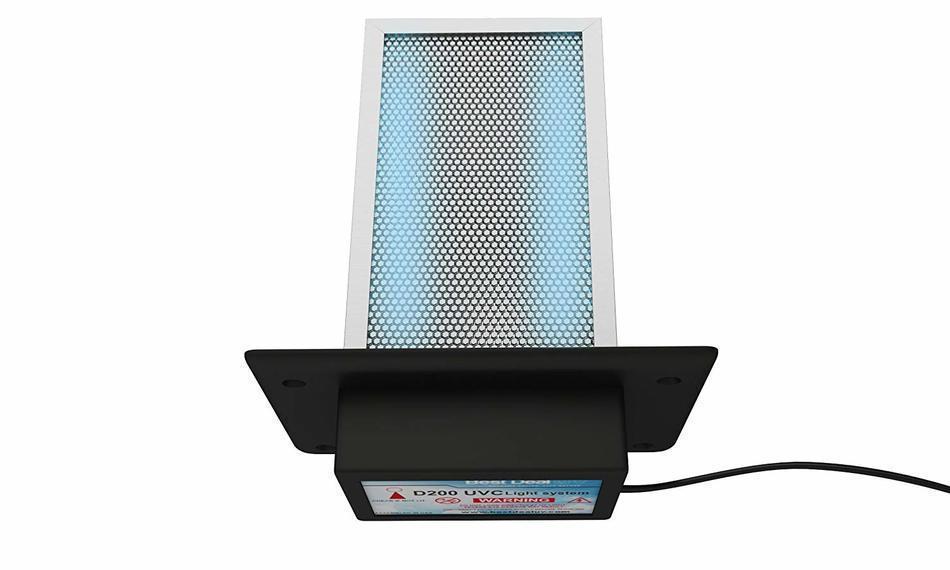
You can install a duct based purifier either in your air supply duct or air return duct. They remove particulates from the air according to the type of air purifier technology you decide to use.
So for instance, if you get an APCO duct based air purifier it gets rid of odors, gases, and particulates before they spread in your home. The best way to get a duct air purifier installed is to hire a professional to do it for you. In light of this, depending on what type of air purifier you install, if your air purifier fails in any way it can restrict the airflow in your HVAC and potentially stop it from working.
How Much Do Whole House Air Purifiers Cost?
There are 3 key aspects to whole house air purifier costs and they include the price of the device itself, installation costs and finally maintenance costs. The price of your air purifier depends on its technology while installation costs depend on your location and complexity of your HVAC system.
Lastly, annual maintenance costs depend on whether your air purifier uses a filter or not or UV lights. Here is a table summarizing the price and costs ranges by technology for whole house air purifiers,
Whole House Air Purifier Costs
|
Type Of Air Purifier |
Price |
Installation Cost |
Annual Maintenance |
|
Flat Filters |
US$5 – $100 |
US$50 |
N/A |
|
Extended Media Filters |
US$30 – $200 |
US$70 – $200 |
N/A |
|
Electrostatic Precipitators |
US$600 – $1500 |
US$200 – $750 |
N/A |
|
Charged Media |
US$150 – $1000 |
US$70 – $750 |
$30-$150 |
|
UVGI |
US$400 -$800 |
US$150 – $750 |
US$30 – $100 |
|
APCO |
US$300 – $1000 |
US$150 – $750 |
US$30 – $200 |
|
HEPA |
US$500 – $3000 |
US$200 – $750 |
US$30 – $200 |
|
Stand Alone |
US$600 – $300 |
US$200 – $750 |
US$30 – $300 |
|
Duct Based |
US$300 – $1500 |
US$150 – $750 |
Us$30 – $300 |
Whole House Air Purifiers vs Portable Air Purifiers?
The most important difference between portable and whole house air purifiers is that portable air purifiers have much stronger performance per room. As much as a single whole house air purifier can clean your entire home it cannot match the air change per hour (ACH) rate of a portable air purifier in a given room. Portable air purifiers can change the air in your room up to 8 times in an hour while you will be lucky to reach 3 air changes per hour with a whole house air purifier.
This means that whole house air purifiers are much slower at delivering clean air in a single room than portable air purifiers. If you are getting an air purifier to address allergy or prevent catching something from the air an air purifier giving you less than 3 air changes per hour just won’t do it for you. So instead or in addition to a whole house air purifier, you would need a portable air purifier.
Whole house air purifiers are however very useful at general removal of pet dander, dust, pollen and other large air pollutants across your entire home. For larger particles, they provide the necessary ACH over a much wider area than portable air purifiers and are worth considering.
If you are concerned about odor and dangerous off-gassing and gases in your home the wise choice would be to place a portable air purifier in the rooms where such pollutants are a problem. As much as you can get a whole house air purifier that can deal with gas and odors if you want the best performance for these types of pollutants then rather opt for a portable air purifier. You can place a portable air purifier in a room like a kitchen or a basement where odors are coming from while your HVAC air purifier cleans the air in the rest of your home.
When it comes to maintenance, one whole house air purifier is much easier to maintain as compared to having multiple devices across your home that need a filter change. On the flip side if your HVAC or whole house purifier malfunctions then you could end up with no clean air in the entire home. For portable air purifiers, you can simply move devices around as needed until you get a replacement and you have more control over downtime.
Compared to portable air purifiers, whole house air purifiers are the better option if you want discrete and quite air cleaning. Unlike portable air purifiers which eat up space and you easily notice as they hum away in the background, whole house air purifiers are out of sight devices and add no extra obstructions in your home.
Nevertheless from an installation perspective portable air purifiers are plug and play devices and much easier to set up. As for whole house air purifiers, you would rather hire a professional to come and install it for you unless you are a handyman and you enjoy DIYing things. But for guaranteed results get a pro to come in.
Lastly, there is more uncertainty when it comes to whole house air purifiers due to general lack of transparency from service providers and if you don’t do your due diligence like you are doing now you can easily get walked over. As for portable air purifiers, information is more widely available and there is virtually no middleman in this supply chain trying to get you to use their installation services in addition to buying your device through them.
So here is my final take on whether you should go with a portable or whole house air purifier. My take is if you can do both then go for both. If you want coverage over the entire home your best bet is a whole house air purifier but only if you have a central air system or HVAC.
If you have asthmatics, people with odor sensitivities or anyone who reacts to bad air quality in your home you are better off with portable air purifiers around your home as they will give you the best performance when it comes to removing the finest of air particles and smallest odor and gas molecules. If I had to pick between portable and whole house I would go with a portable for even if it means getting one for every single room as they simply do a better job at cleaning indoor air.
What Are The Benefits Of Whole House Air Purifiers?
I have already revealed some of the weaknesses and benefits of whole house air purifiers especially in the section where I compare them to portable air purifiers. I think the single most important benefit of whole house air purifiers is that they provide clean air in your entire home with just one device. They are the most cost-effective way to maintain adequate air quality in every single room of your house.
Depending on what technology your purifier is using, whole house air purifiers are very good at removing dust, tiny insects and insect body parts, pollen and larger particulate matter from your indoor air. With some limitations, they can also get rid of gases and odors.
Whole house air purifiers not only provide you with clean air but also protect your HVAC and extend its life by preventing dust and pollutants from clogging up your air ducts. They get rid of air pollutants from outdoors before they even get into your home.
Unlike high MERV air filters, which can restrict your HVAC’s airflow, whole house air purifiers do not compromise your HVAC system but rather enhance its performance. This is because, in addition to minimizing dust levels in your HVAC, whole house purifiers also come with their own built-in fan to extract and expel air and thereby supplementing your HVAC’s air flow.
As your HVAC and air ducts don’t get as clogged up anymore, you spend less on cleaning them as you clean them less often and you can also reduce your energy bill by up to 25% as your HVAC does not need to work as hard as it extracts and pumps air through your air duct. Whole house air purifiers will also keep your house cleaner for longer by slowing down the build-up of dust on surfaces around your home.
Though they are not best for people who are sensitive to air pollutants, whole house purifiers will provide some level of relief for allergy sufferers, asthmatics, and other health reactions triggered by poor air quality. To get the best results in a room you have to supplement them with a portable air purifier.
With whole house air purifiers removing and preventing dangerous air pollutants from entering your home, they can improve your quality of life, and even have anti-aging effects on your skin and body in general with positive implications on your life expectancy. What’s more whole house air purifiers operate silently allowing you to work and sleep peacefully at night with no disruption or humming noise in the background.
For those of you who do not want random devices lying around your house, whole house air purifiers are a perfect match for you as they are out of sight and do not take up any valuable indoor space. Lastly, a whole air purifier can actually increase the value of your house.
As these devices reduce your energy consumption, they are viewed favorably by society as the world transitions towards eco-friendly and green homes. Besides, it can only be selling point to whoever is buying your home that their future home comes with an HVAC that ensures good air quality around their whole home.
What Are The Disadvantages of Whole House Air Purifiers?
The main drawback with whole house air purifiers is their weaknesses in dealing with gases such as carbon monoxide, ozone, radon, and VOCs. Most devices just don’t have the filters or the technology that can remove gases and even if they do, the air change per hour that can be achieved by whole house air purifiers is just too low to get rid of air pollutants such as gases fast enough before you inhale them. This is an important point especially for people with health reactions to poor air quality.
To get the best air quality in your home, in addition to whole house air purifiers, you need to place a portable air purifier in rooms like your living room and bedroom where you spend the most time. With this in mind, one can say whole house air purifiers reduce the need for you to have multiple portable air purifiers across your home. They provide an adequate but not optimal level of air quality.
Whole house air purifiers can also be quite complex devices to install. Not all houses have the same kind of HVAC or duct work set up. There are just too many unique situations and you may find yourself in a situation where you bought a whole house purifier and it just does not fit anywhere along your air duct.
There is a lot of decisions making involved, and risks involved in installing a whole house air purifier. It’s very easy to end up with leaks in your HVAC and if you don’t like stories and complications the easy way out is to stick to portable air purifiers. Finally, you will want to avoid whole house air purifiers that produce ozone, such as electrostatic precipitators. As I mentioned earlier Ozone can harm you and the last thing you want is ozone floating around your entire house in whatever quantity.
What Is The Best Whole House Air Purifier Brand?
There are many different brands of whole house air purifiers out there but here are the top brands in order of popularity and good feedback from users,
If you come across other brands of whole house air purifiers and find yourself in doubt about their performance and quality, rather come back to my list and look for a similar from any of the listed brands. All the brands I have listed here have reliable whole house air purifier solutions and strong guarantee and warranty programs. You won’t go wrong with devices from any of the brands listed here.
Do I Need A Whole House Air Purifier?
If you have read the whole post you might have come up with an answer for yourself already on whether you need a whole house air purifier. Regardless allow me to summarize the answer to this question. Here are 6 key points to help you decide whether you need a whole house air purifier or not.
- You need a whole house air purifier if you have a large home and you want to maintain good air quality in all your rooms. It’s simply the most cost-effective way to get good air quality across a large home.
- If your home has 2 bedrooms or less you are better off with portable air purifiers.
- You can get a whole house air purifier to run alongside portable ones if you or anyone in your home face various health risks because of bad air quality but the first choice is to use portable air purifiers.
- If you want to have out of sight air purifiers for any reason then whole house air purifiers are the way to go. Whole house air purifiers will also come in handy if you want absolute silence in your home while your air is being cleaned.
- You need a whole house air purifier if you have no time or money to maintain multiple devices placed across your home.
- Avoid whole house air purifiers if you don’t have a central air system or HVAC. Also stay away from them if you prefer plug and play devices.
With this summary and the information packed in this post, you should now be confident about making decisions regarding whole house air purifiers on your own. If you still have any question on this topic please feel free to ask in the comments below and I will get back to you as soon as I see your question. Also check out my post on best whole house air purifiers and best room air purifiers if you would like to know which brand air purifiers to go for in each case.

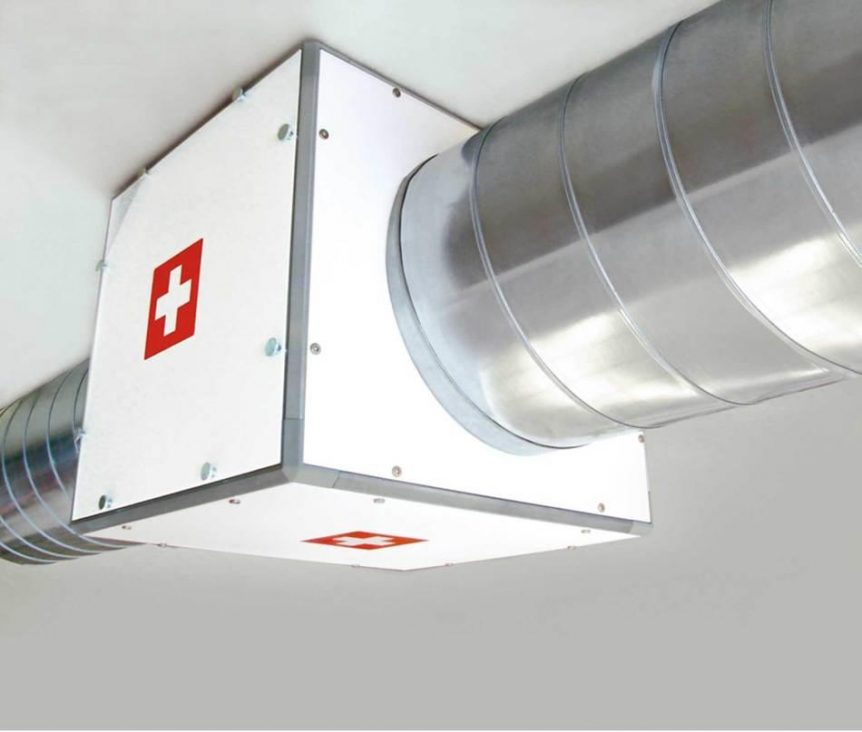
Comments
Hello, I have had my 2 story town home tested and results show a wide variety of mold…mostly dead soil spores, apparently being blown in from outside. I am very allergic to mold, pollens, dust, many foods & chemicals. I have been advised to get an Ultravation (UMX-1902T) home air filtration system. .Are you familiar with this brand…any thoughts? .I would appreciate any feedback you can offer. Thank you.
Hello @DL Powers. I have had a look at this system. I am not familiar with it but from reading up on it it should work better than your standard whole house purifiers as it comes with multiple advanced filtration systems in unit. In short I give it a thumbs up. let me know how things go
I just had a whole house air purifier installed in my house this week. It is a remote germicidal UV with odor control.. It says it is the trusted method used in hospitals powerful UVC germicidal lamp provides single pass killing controls bacteria viruses and fungi UVV lamp controls odors by oxidizing gases and toxins. My air conditioner company installed it and my house it is new just built 2 years ago. It is a small house ranch two bedrooms and only 1300 square feet. Just wondering if you have heard about this unit. It has two boxes and a U V light. It says our UV replicates the power of the sun to kill germs and removes odors. Sorry this so long but just wanted you opinion and make sure I got the right one for my house. It seems to be working fine but it has only been in 2 days.
Hello Gloria, I would wait a month or 2 to feel the difference. To be sure its a good idea to also use an air quality monitoring device to see how your air quality changes over time as you run the air purifier. Personally I recommend combining UV with another filtration system like a HEPA filter and activated carbon filter to fight solid particulates and non-bacterial sources of odor. UV largely deals with bacterial and viral pollutants.
Hello! Thank you for all the great information! I’m wondering if you know anything about the Reme Halo air purification systems and if so, what you think?
Hi Kim, I have not come across it but just googled it and it looks interesting and worthwhile. My first time seeing this approach but I need to do more research to find out its pros and cons.
Did you research more on the reme halo? My HVAC guy suggested this but cost is $1400+and it looks like you need the change UV every two years for $400. I don’t have any health issues that would suggest this is a need but don’t like the idea of mildew growing in air ducts. I’m thinking I don’t need anything or one portable unit is plenty. If portable, what unit do you suggest.
Thank you for this great info! It’s been very helpful!
Could you please comment on Air scrubber Plus the non-ozone type), which was recommended to us? Is it an APCO? I have spent hours researching this and found your blog helpful but am confused about two things: (i) whether only UVC light (rather than UVB) is most effective for disinfecting – and minimum bulb wattage to be effective; and (ii) whether all apco units generate hydrogen peroxide vapor to kill pathogens. The concern with the UVC light is that the top rated Lennox pure air is a UVB system. The concern with the oxidation is that hydrogen peroxide vapor is classified as a “grey” vapor with unclear long term consequences for breathing it all the time. Thanks!
Hello, we are primarily concerned with pet dander and cigarette smoke. Would you reccommend the APCO unit for our needs? thanks in advance.